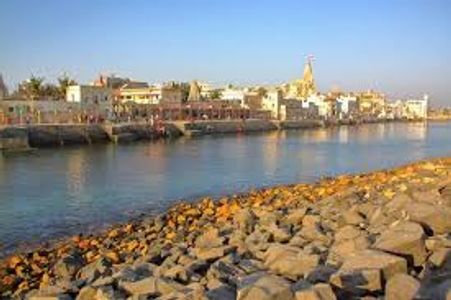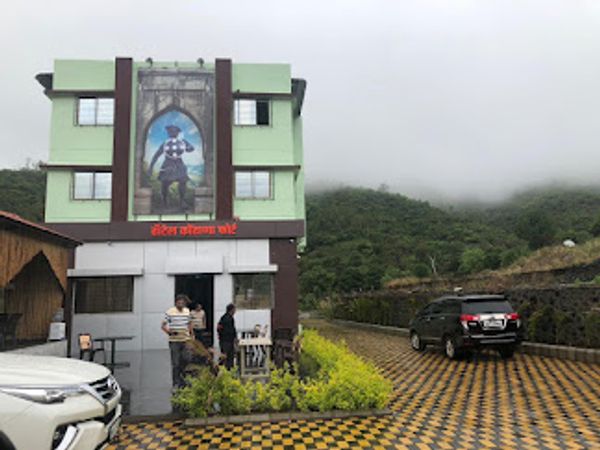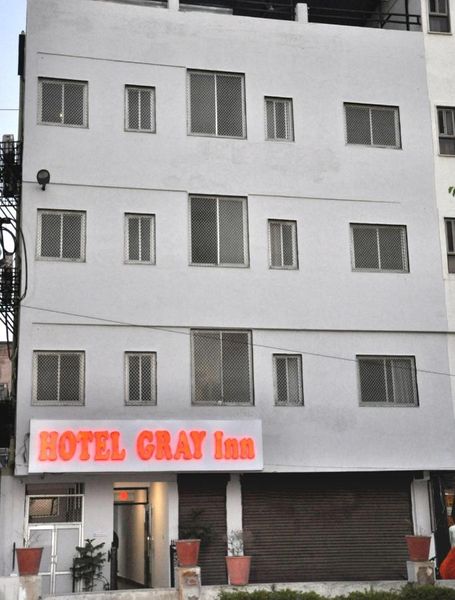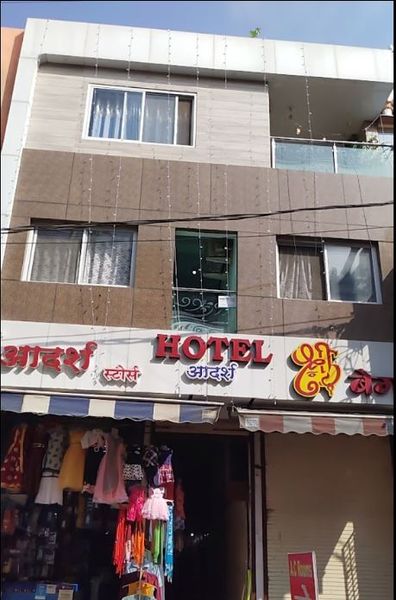Gomati Ghat: A Sacred Destination in Dwarka
 Akash Shree
03 Jan, 2025
10 mins read
2448
Akash Shree
03 Jan, 2025
10 mins read
2448

Gomati Ghat is located in the coastal town of Dwarka, in the western state of Gujarat. It has great religious and cultural importance among Hindus. The ghat is located near the sacred Dwarkadhish Temple, which is one of the most important places of pilgrimage in the region. Gomati Ghat is associated with the river Gomati, which is considered sacred and has a deep connection with the legend of Lord Krishna, who is said to have ruled the kingdom of Dwarka.
Gomati Ghat is a serene place, having spiritual importance, and picturesque views, which attract pilgrims, devotees, and tourists alike. In this article, we are going to talk about the significance of Gomati Ghat, its history, the mythology around it, and why it forms an integral part of a visit to Dwarka.
What is Gomati Ghat?
Gomati Ghat is a sacred riverbank located on the shores of the Gomati River in Dwarka, Gujarat. It is said to be the point where the Gomati River meets the Arabian Sea, and thus, the place is quite serene for rituals and prayers. The ghat is especially considered sacred by Hindus because it is said that Lord Krishna, one of the most important deities in Hinduism, established his kingdom at Dwarka.
The ghat is a very picturesque place with temples dotting all around it and a pathway going down to the river. People come here for holy dip, puja (prayers), and pay homage to Lord Krishna. Along with religious significance, Gomati Ghat's serenity attracts photographers and people seeking some moment of solitude in such scenic views.
Mythological Significance of Gomati Ghat
The Gomati River is in Hindu mythology the earthly embodiment of the sacred Ganga, transported to Dwarka by Lord Krishna. Legend has it that the river originated when Rukmini, Krishna's queen, prayed to the goddess Ganga to flow into Dwarka to purify the area and bring prosperity to the kingdom. It is said that Gomati became Dwarka's divine river. A dip in its water is said to wash away all sins and purify the soul.
The Gomati Ghat is also associated with the legendary tale of Lord Krishna's departure from the earth. According to Hindu scriptures, when Krishna's earthly life was over, he bid farewell to Dwarka, and the city drowned into the ocean. The river connection with the sea depicts the cycle of life and death; the river and the sea are also metaphors of the divine presence in Hindu philosophy.
Gomati Ghat and Lord Krishna
The deepest connection Gomati Ghat has is to Lord Krishna who is believed to have spent part of his lifetime at Dwarka. According to the legend, Krishna was born in Mathura but later on shifted to Dwarka to establish his kingdom and to be with his family. It is said that Krishna created the Gomati River to purify the waters of Dwarka so that people there would be blessed with prosperity and spiritual goodness.
There is a temple of Lord Krishna at Gomati Ghat, where visitors and pilgrims offer prayers and rituals to remember the almighty. Spiritual energy has been immense from the ghat, and it is believed that those who visit the ghat and offer their prayers with devotion will receive the blessings of Lord Krishna.
It is said that pilgrims can gain liberation, or moksha, and be cleansed of all the sins they have gathered over time by bathing in the holy waters of this river. For many, Gomati Ghat is a pilgrimage destination in Dwarka that one must visit for spiritual peace.
Visiting Gomati Ghat: What to Expect
The first thing that strikes you when you visit Gomati Ghat is its peaceful and sacred ambiance. The ghat is not just a physical location but also a place where time seems to slow down, inviting visitors to connect with their spiritual selves.
Temples and Rituals
The area surrounding Gomati Ghat is dotted with temples, many of which are dedicated to Lord Krishna and other deities. Close by is the famous Dwarkadhish Temple, a temple dedicated to Lord Krishna, which houses the deity in the form of Dwarkadhish, the ruler of Dwarka. Most pilgrims visiting the Ghat combine the visit with that of this iconic temple, performing rituals like aarti (prayers) and darshan (viewing the idol).
Pilgrims often come to Gomati Ghat to take a dip in the holy waters, as it is believed that the river's sacred water has the power to cleanse the soul. After the dip, devotees typically perform puja (rituals) on the banks of the river, offering prayers and flowers, or simply sitting in quiet meditation by the water.
Scenic Views and Photography
The ghat offers beautiful views of the Gomati River as it flows towards the Arabian Sea. Visitors can enjoy the picturesque scene of the river meeting the sea, and the tranquil atmosphere provides a perfect backdrop for photography. The banks of the river are lined with small temples, shrines, and bathing areas, giving the ghat a serene and devout atmosphere.
It will be a golden hour for photographers as early morning and late afternoon light provide ideal conditions to capture the beauty of an enormous ghat, the surrounding temples, and the river flowing along it. The reflections in the water, sunset over the sea, and temple structures add a spiritual and scenic beauty to the location.
Best Time to Visit Gomati Ghat Dwarka:
The best time to visit Gomati Ghat and Dwarka is during the winter months from November to February, as the pleasant weather with cool temperatures makes it perfect for sightseeing as well as for religious activities. The summer months between March and June are very warm with temperatures sometimes reaching up to 40°C (104°F), which may be difficult for outdoors. The monsoon rains from June to September are too heavy and at times disrupt both travel and viewing.
For those planning to participate in the Dwarka Festival or other religious events, visiting during the festival season can be an enriching experience. These festivals usually coincide with significant religious dates like Janmashtami, the celebration of Krishna’s birth, making it an even more special time to visit Gomati Ghat and other landmarks in Dwarka.
How to Reach Gomati Ghat, Dwarka
Dwarka is connected by road, rail, and air, thus easily accessible for pilgrims and tourists from various parts of India.
By Air: The nearest airport to Dwarka is Porbandar Airport, located about 100 km away. From the airport, you can hire a taxi or use public transport to reach Dwarka.
By Rail: Dwarka has its railway station, which is well connected to major cities in the state of Gujarat and other parts of the country. Dwarka Junction is hardly a few kilometers away from the Gomati Ghat.
By Road: By Road, Dwarka is well connected. Regular buses, taxis are available from cities like Rajkot and Porbandar. The ghat is accessible on foot or through auto rickshaw from Dwarkadhish Temple.
Conclusion
Gomati Ghat in Dwarka is not just a riverbank, but a place that holds sacred religious and cultural significance. If you are a devotee of Lord Krishna, or if you are a spiritual seeker, or simply a traveler seeking peace and beauty in Gujarat, Gomati Ghat will leave an unforgettable impression. This ghat, with its rich mythology, serene atmosphere, and connection to the legendary kingdom of Dwarka, remains one of the most important pilgrimage sites in India.
For those visiting Dwarka, a trip to Gomati Ghat is an essential part of the journey, offering a chance to connect with the divine and experience the spiritual serenity that permeates this sacred land.
Written By:
Akash Shree



Hotels at your convenience
Now choose your stay according to your preference. From finding a place for your dream destination or a mere weekend getaway to business accommodations or brief stay, we have got you covered. Explore hotels as per your mood.


